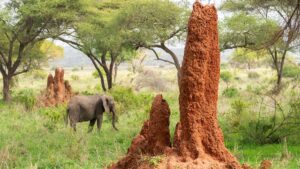Should seaweed be back on your ag watchlist?

Pic: Stevica Mrdja / EyeEm / EyeEm via Getty Images
Seaweed proponents are suggesting it is an agriculture industry to watch in the coming years, but it will need to pass the smell test after the ASX’s only kelp play turned out to be an abject failure.
The Australian Seaweed Institute is developing a blueprint for the sector alongside AgriFutures Australia, in order to turn a cottage industry into, in its words, ‘a billion dollar jobs, environmental and economic boon’.
The institute’s chief Jo Kelly says current global demand for seaweed-based products is about $US11bn ($17.2bn). These products include food, cosmetics, nutraceuticals, animal feed and fertiliser.
Depending on which forecasts you read, the sector might grow enough to do anything from double to become an up to a $US90bn industry by 2025.
Stockhead is seeking comment from Kelly.
ASX and algae
To make it work in the eyes of analysts seaweed businesses will need to look to Asia and develop strongly defendable brands, as companies have been able to do in the dairy sector and increasingly in fisheries.
ASX investors may need more convincing however, after the market’s only seaweed-like play, Affinity Energy (ASX:AEB, formerly known as Algae.Tec) was suspended from the ASX in February 2019 and is yet to re-emerge.
Affinity was part of the algae biofuel craze in the early 2000s as everyone from Silicon Valley venture capitals to Indian conglomerates decided it was the next big thing in low emissions fuel. Unfortunately, rosy forecasts ran into physics which dictates that algae can’t be grown at scale.
Affinity attempted to make algae-based nutraceuticals and fish food, signing at one point a loose arrangement to make skincare products for Skin Elements (ASX:SKN), but was never able to turn that business into a scalable money maker.
Cow farts is the next big opportunity
The Seaweed Industry Blueprint project wants to bring existing seaweed research and aquaculture efforts together into an action plan that has the lofty target of creating a $1bn Australian industry by 2040.
“Australia has ideal growing conditions and a huge export opportunity for high-value bioproducts from native Australian seaweeds. And while there are a handful of entrepreneurs and researchers undertaking projects around Australia, there are no commercial scale seaweed ocean farms operating here and no strategic plan for industry development,” Kelly says.
The project forms part of AgriFutures Australia’s Emerging Industries Program which identifies local industries that can feasibly reach a $10 million per annum threshold in the next five years.
While fish food and nutraceuticals didn’t work out for Affinity Energy, seaweed as cattle feed may be Australia’s way in.
In 2016 the national researcher CSIRO in 2016 identified an Australian seaweed called Asparagopsis as able to reduce methane emissions from cattle to almost zero when added to feed.
With the livestock industry under pressure to reduce methane, which makes up half of the global sector’s emissions output, according to the US Food and Agriculture Organisation. About 68 per cent of Australia’s agriculture greenhouse gases come from cattle farts.
A CSIRO trial was still running in March on a Townsville farm and the organisation is in the process of setting up a company, Future Feed, to commercialise the discovery.
UNLOCK INSIGHTS
Discover the untold stories of emerging ASX stocks.
Daily news and expert analysis, it's free to subscribe.
By proceeding, you confirm you understand that we handle personal information in accordance with our Privacy Policy.








